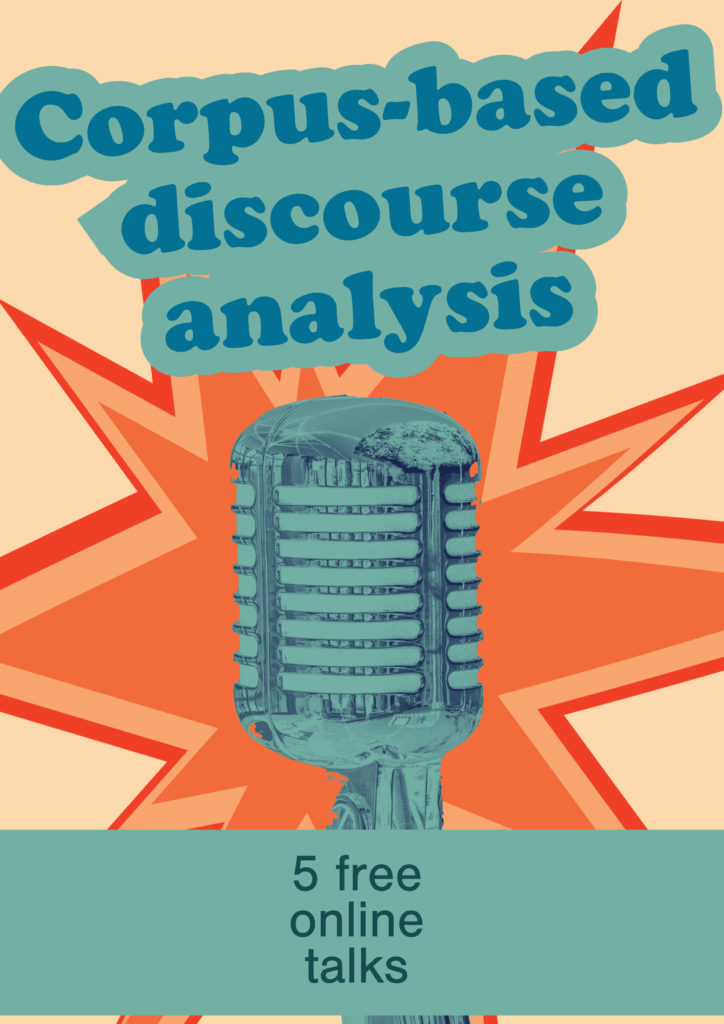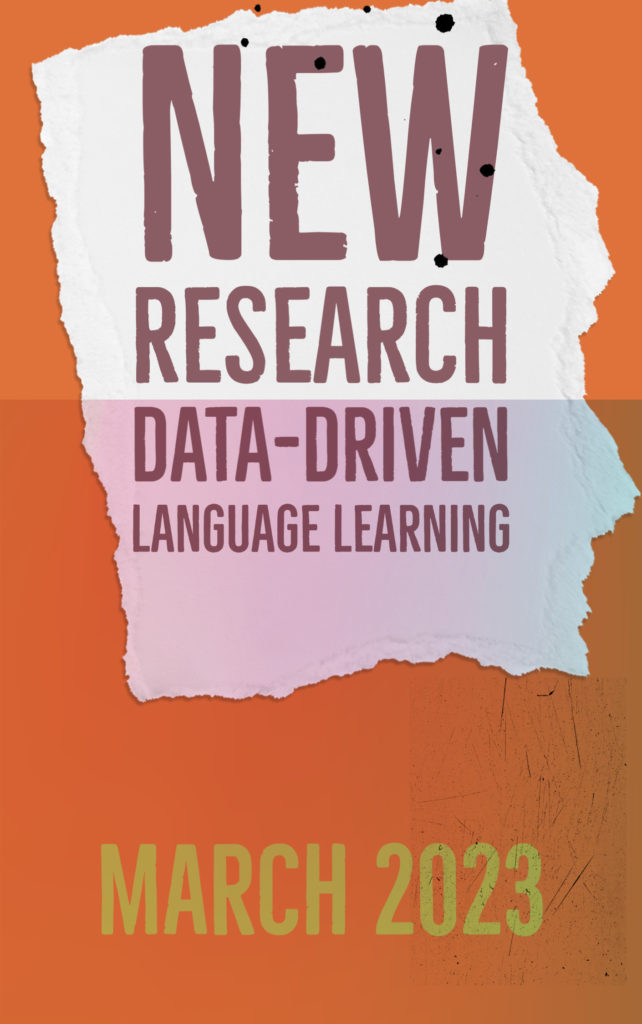This one from John Sinclair’s Tuscan Word Centre, 2001. With Michael Barlow and Rosalía Crespo.

And this one with John Sinclair, Elena Tognini Bonelli, Michael Barlow, Nadja Nesselhauf, Susan Conrad and so many more.

And the grand balcony pic

This one from John Sinclair’s Tuscan Word Centre, 2001. With Michael Barlow and Rosalía Crespo.

And this one with John Sinclair, Elena Tognini Bonelli, Michael Barlow, Nadja Nesselhauf, Susan Conrad and so many more.

And the grand balcony pic


Call for papers – Vol. 31, Issue 2
Guest editors: Javad Zare, Kosar University of Bojnord, Iran, and Alex Boulton, Université de Lorraine, France
Language Learning & Technology has an active call for papers in a special issue on Generative AI and data-driven learning in second language learning: What the future holds, guest edited by Javad Zare and Alex Boulton.
Abstracts for this special issue Call for Papers should be no more than 500 words and should describe the study’s aim, methodology, findings related to L2 learning outcomes, and how these findings can be used in classroom contexts to enhance L2 teaching and learning with technology. To be considered for this special issue, which will appear in volume 31, issue 2 in June of 2027, please submit a title and a 500-word abstract through this online form by June 1, 2025.
Details for the call for proposals are available on our website: https://www.lltjournal.org/post/21/
Doherty, B. (2015), ‘Why words matter when reporting migrants’ stories’. Media Asia, 42(3-4): 136-143.
Gerard, L. (2016), ‘The press and immigration: Reporting the news or fanning the flames of hatred?’ SubScribe, 3. URL: http://www.sub‐scribe.co.uk/2016/09/the‐press‐and‐immigration‐reporting.html
Goodfellow, M. (2020), Hostile environment: How immigrants became scapegoats, New York: Verso Books.
Pérez-Paredes, P. (2024). Frequency and keyness: what are they and how can they be used to explore representation? In Charlotte Taylor, & Frazer Heritage (eds.). Analyzing Representation. A Corpus and Discourse Textbook.. Routledge, pp. 43-65.
Pérez-Paredes, P., Aguado. P. & Sánchez, P. (2017). Immigrants in UK legislation and Administration informative texts: a corpus-driven study (2007-2011). Discourse & Society,28,1,81-103.
Pérez-Paredes, P. & Remigi, E. (2025). EU citizens as migrants. In Charlotte Taylor, Simon Goodman and Stuart Dunmore (eds.) Discursive construction of migrant identities. Bloomsbury Advances in Critical Discourse Studies. Bloomsbury.
Taylor, C. (2014). Investigating the representation of migrants in the UK and Italian press: A cross-linguistic corpus-assisted discourse analysis. International journal of corpus linguistics, 19(3), 368-400.
Taylor, C. (2020). Representing the Windrush generation: metaphor in discourses then and now. Critical Discourse Studies, 17(1), 1-21.
Taylor, C. (2021). Metaphors of migration over time. Discourse & Society, 32(4), 463-481.
Zschomler S. (2019), ‘“Language Is Your Dignity”: Migration, Linguistic Capital, and the Experience of Re/De-Valuation. Languages’, 4(3):64. https://doi.org/10.3390/languages4030064
The Teaching and Language Corpora (TaLC) conference is a biennial event. Here is a list of the editions of the TaLC conference, along with the year and the university where it took place. In bold, those editions I attended.
Volumes published with selected research from the conferences are also included.
1994 – Lancaster University, UK. Teaching and Language Corpora. Originally published in 1997. Routledge new edition 2013.
1996 – Lancaster University, UK
1998 – Keble College, Oxford, UK
2000 – Graz, Austria
2002 – Bertinoro, Italy
2004 – 6th TaLC Conference. Granada, Spain. Hidalgo, E., Quereda, L. & Santana, J. (eds.) (2007). Corpora in the foreign language classroom. Rodopi.
2006 – Paris, France
2008 – Lisbon, Portugal
2010 – Brno, Czech Republic
2012 – 10th TalC Conference. Warsaw, Poland Leńko-Szymańska, A. & Boulton, A. (eds.). (2015) Multiple Affordances of Language Corpora for Data-driven Learning. John Benjamins.
2014 – 11th TalC Conference. Lancaster University, UK
2016 – 12th TalC Conference. Justus Liebig University, Giessen, Germany
2018 – 13th TalC Conference. University of Cambridge, UK (URL) Pérez-Paredes, P. & Mark, G. (eds.) (2021). Beyond concordance lines: applications of corpora in language education. John Benjamins. And Charles, M., & Frankenberg-Garcia, A. (2021). Corpora in ESP/EAP Writing Instruction. Routledge London.
2020 – 14th TalC Conference.University of Perpignan (held virtually due to the COVID-19 pandemic)
2022 – 15th TalC Conference. University of Limerick, Ireland (URL)
2024- 16th TalC Conference. Manchester Metropolitan University, UK (URL)
One of my students asked me for some online references to learn more about corpus-based/assisted discourse analysis. Here’s 5 online talks.

Obesity in the News: Combining Corpus and Critical Perspectives. Online talk by Gavin Brookes at Universidad de Murcia.
Corpus linguistics and the discursive construction of migrants. Online talk by Charlotte Taylor at Universidad de Murcia.
CorpusCast with Dr Robbie Love: Professor Paul Baker on social justice.
Corpus-based discourse analysis. Online talk by Tony McEnery. LAEL webinar.
Corpus linguistics and the analysis of language ideology. Online talk by Rachelle Vessey at Universidad de Murcia.

Allan, R. (2023). Reserved for Research? Normalising Corpus Use for School Teachers. Nordic Journal of English Studies, 22(1).
Allan, R., Walker, T., & Langum, V. (2023). Data-driven learning: Tools, approaches, and next steps. Nordic Journal of English Studies, 22(1), 1-12.
Muftah, M. (2023). Data-driven learning (DDL) activities: do they truly promote EFL students’ writing skills development? Education and Information Technologies, 1-27.
O’Keeffe, A. (2023). A Theoretical Rationale for the Importance of Patterning in Language Acquisition and the Implications for Data-driven Learning. Nordic Journal of English Studies, 22(1), 16-41.
Şahin Kızıl, A. Data‐driven learning: English as a foreign language writing and complexity, accuracy and fluency measures. Journal of Computer Assisted Learning.